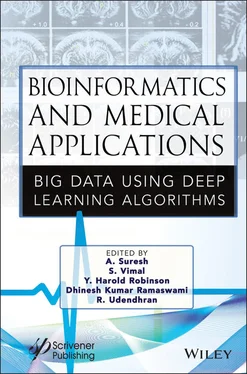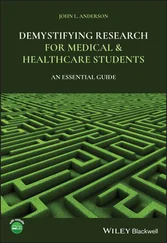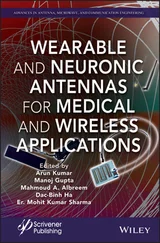Bioinformatics and Medical Applications
Здесь есть возможность читать онлайн «Bioinformatics and Medical Applications» — ознакомительный отрывок электронной книги совершенно бесплатно, а после прочтения отрывка купить полную версию. В некоторых случаях можно слушать аудио, скачать через торрент в формате fb2 и присутствует краткое содержание. Жанр: unrecognised, на английском языке. Описание произведения, (предисловие) а так же отзывы посетителей доступны на портале библиотеки ЛибКат.
- Название:Bioinformatics and Medical Applications
- Автор:
- Жанр:
- Год:неизвестен
- ISBN:нет данных
- Рейтинг книги:5 / 5. Голосов: 1
-
Избранное:Добавить в избранное
- Отзывы:
-
Ваша оценка:
- 100
- 1
- 2
- 3
- 4
- 5
Bioinformatics and Medical Applications: краткое содержание, описание и аннотация
Предлагаем к чтению аннотацию, описание, краткое содержание или предисловие (зависит от того, что написал сам автор книги «Bioinformatics and Medical Applications»). Если вы не нашли необходимую информацию о книге — напишите в комментариях, мы постараемся отыскать её.
The main topics addressed in this book are big data analytics problems in bioinformatics research such as microarray data analysis, sequence analysis, genomics-based analytics, disease network analysis, techniques for big data analytics, and health information technology.
Audience Bioinformatics and Medical Applications: Big Data Using Deep Learning Algorithms
Bioinformatics and Medical Applications — читать онлайн ознакомительный отрывок
Ниже представлен текст книги, разбитый по страницам. Система сохранения места последней прочитанной страницы, позволяет с удобством читать онлайн бесплатно книгу «Bioinformatics and Medical Applications», без необходимости каждый раз заново искать на чём Вы остановились. Поставьте закладку, и сможете в любой момент перейти на страницу, на которой закончили чтение.
Интервал:
Закладка:
Because of the huge measure of individual data that should be overseen, data stockpiling and security are additionally vital when managing medical care. For all of this, choosing purely local administration, especially for mobility, is not yet practical due to limited processing and storage capabilities.
References
1. Azuaje, F., Artificial intelligence for precision oncology: beyond patient stratification. NPJ Precis. Oncol. , 3, 6, 2019, https://doi.org/10.1038/s41698-019-0078-1.
2. Bauer, H., Patel, M., Veira, J., The Internet of Things: sizing up the opportunity , McKinsey & Company, New York (NY), 2016, Available from: http://www.mckinsey.com/industries/high-tech/our-insights/the-internet-of-things-sizing-up-the-opportunity.
3. Baloch, Z., Shaikh, F., Unar, M., A context-aware data fusion approach for health-IoT. Int. J. Inf. Technol. , 10, 241–245, 2018, 10. 10.1007/s41870-018-0116-1.
4. Choi, H., A Risk Stratification Model for Lung Cancer Based on Gene Coexpression Network and Deep Learning. Applications of Bioinformatics and Systems Biology in Precision Medicine and Immuno Oncology, Research Article | Open Access, BioMed Research International, 2018, 2914280, 11, 2018. 2018 |Article ID 2914280, 11 pages, 2018, https://doi.org/10.1155/2018/2914280, Received 13 Oct 2017| Revised 07 Dec 2017 | Accepted 11 Dec 2017 |Published 16 Jan.\.
5. Deen, M.J., Information and communications technologies for elderly ubiquitous healthcare in a smart home. Pers. Ubiquitous Comput. , 19, 573–599, 2015.
6. Gao, W. et al. , Fully integrated wearable sensor arrays for multiplexed in situ perspiration analysis. Nature , 529, 7587, 509–514, 2016.
7. Gyllensten, I.C. et al. , A novel wearable vest for tracking pulmonary congestion in acutely decompensated heart failure. Int. J. Cardiol. , 177, 1, 199–201, 2014.
8. Haghighat, M., Abdel-Mottaleb, M., Alhalabi, W., Discriminant correlation analysis: real-time feature level fusion for multimodal biometric recognition. IEEE Trans. Inf. Forensics Secur. , 11, 9, 1984–96, 2016.
9. Kadir, T. and Gleeson, F., Lung cancer prediction using machine learning and advanced imaging techniques. Transl. Lung Cancer Res. , 7, 3, 304–312, 2018, Retrieved from http://tlcr.amegroups.com/article/view/21998.
10. Kumar, S. and Maninder, S., Big data analytics for healthcare industry: impact, applications, and tools. Big Data Min. Anal. , 2, 48–57, 2019, 10.26599/BDMA.2018.9020031.
11. Li, Y., Ge, D., Gu, J. et al. , A large cohort study identifying a novel prognosis prediction model for lung adenocarcinoma through machine learning strategies. BMC Cancer , 19, 886, 2019, https://doi.org/10.1186/s12885-019-6101-7.
12. Li, Y., Wu, et al. , Wiki-Health: A Big Data Platform for Health Sensor Data Management. in: Cloud Computing Applications for Quality Healthcare Delivery, A. Moumtzoglou, A. Kastania (Ed.), pp. 59–77, IGI Global, 2014, 10.4018/978-1-4666-6118-9.ch004, 2014.
13. Lisa, A. and Gustafson, D.H., The Role of Technology in Healthcare Innovation. A Commentary. J. Dual Diagn. Author manuscript; available PMC 2014 Jan 1. 2013, 9, 1, 101–103, 2013, J Dual Diagn. Published online 2012 Nov 27.
14. Macedo, F. et al. , Computer-aided detection (CADe) and diagnosis (CADx) system for lung cancer with likelihood of malignancy. Biomed. Eng. Online , 2, 15, 2016.
15. Mike, Hoover, W., Strome, T., Kanwal, S., Transforming healthcare through big data strategies for leveraging big data in the healthcare industry, Health IT Outcomes, USA, 2013, http://ihealthtran.com/iHT2BigData 2013.pdf.
16. Rastogi, R., Chaturvedi, D.K., Satya, S., Arora, N., Trivedi, P., Gupta, M., Singhal, P., Gulati, M., MM Big Data Applications: Statistical Resultant Analysis of Psychosomatic Survey on Various Human Personality Indicators , ICICI 2018 Paper as Book Chapter, Chapter 25, © Springer Nature Singapore Pte Ltd, Singapore, 2020, Book Subtitle: Proceedings of Second International Conference on Computational Intelligence, 2018, https://doi.org/10.1007/978-981-13-8222-2_25.
17. Singh, Y. and Chauhan, A.S., Neural Networks in Data Mining. J. Theor. Appl. Inf. Technol. , 5, 6, 37–42, 14, 2005.
18. Sun, and Reddy, C.K., Big data analytics for healthcare, in: Proc. 19th ACM SIGKDD International Conference on Knowledge Discovery and Data Mining , pp. 1525–1525, 2013.
19. Wu, M. and Luo, J., Wearable technology applications in healthcare: A literature review. Online. J. Nurs. Inform. (OJNI) , 23, 3, 1, Fall. 2019, Available at http://www.himss.org/ojn.
20. Xu, J., Yang, P., Xue, S. et al. , Translating cancer genomics into precision medicine with artificial intelligence: applications, challenges and future perspectives. Hum. Genet. , 138, 109–124, https://doi.org/10.1007/s00439-019-01970-5, 2019.
21. Zanella, A., Bui, N., Castellani, A., Vangelista, L., Zorzi, M., Internet of things for smart cities. IEEE Internet Things J. , 1, 1, 22–32, 2014.
22. Zhao, W. and Wang, H., Strategic decision-making learning from label distributions: an approach for facial age estimation. Sensors , 16, 994–1013, 2016.
*Corresponding author: rohit.rastogi@abes.ac.in
3
Computational Predictors of the Predominant Protein Function: SARS-CoV-2 Case
Carlos Polanco1,2*, Manlio F. Márquez3 and Gilberto Vargas-Alarcón4
1 Department of Electromechanical Instrumentation, Instituto Nacional de Cardiología “Ignacio Chávez”, México City, México
2 Department of Mathematics, Faculty of Sciences, Universidad Nacional Autónoma de México, México City, México
3 Clinical Research Center, Instituto Nacional de Cardiología “Ignacio Chávez”, México City, México
4 Research Center, Instituto Nacional de Cardiología “Ignacio Chávez”, México City, México
Abstract
In this chapter, we describe the main molecular features of SARS-CoV-2 that cause COVID-19 disease, as well as a high-efficiency computational prediction called Polarity Index Method ®. We also introduce a molecular classification of the RNA virus and DNA virus families and two main classifications: supervised and non-supervised algorithms of the predictions of the predominant function of proteins. Finally, some results obtained by the proposed non-supervised method are given, as well as some particularities found about the linear representation of proteins.
Keywords: Adenoviridae, advantages, algorithms, Anelloviridae, Arenaviridae, Caliciviridae, computational predictions, Coronaviridae family, disadvantages, DNA virus, Herpesviridae, Herpesviridae, linear representation, non-supervised algorithms, Papillomaviridae, Parvoviridae, Picornaviridae, PIM ®profile, Polarity Index Method ®, Poxviridae, putative proteins, Reoviridae, Rhabdoviridae, RNA virus, SARS-CoV-2, supervised algorithms
3.1 Introduction
The discipline called Proteomics focuses, among other things, on the prediction of the predominant function of proteins, since this enables their construction by alteration or removal of their amino acids, either in its linear or in its three-dimensional representation.
This means some benefits for scholars of this discipline; since from these modifications, it is possible to obtain, mostly by accident, proteins with improved toxic action toward some pathogen.
Of course, it does not mean that there are no proteins or peptides in nature that have the toxic action we are looking for, it is just that in most cases, it is less expensive to try to manufacture one than to find it among the many organisms in nature.
Читать дальшеИнтервал:
Закладка:
Похожие книги на «Bioinformatics and Medical Applications»
Представляем Вашему вниманию похожие книги на «Bioinformatics and Medical Applications» списком для выбора. Мы отобрали схожую по названию и смыслу литературу в надежде предоставить читателям больше вариантов отыскать новые, интересные, ещё непрочитанные произведения.
Обсуждение, отзывы о книге «Bioinformatics and Medical Applications» и просто собственные мнения читателей. Оставьте ваши комментарии, напишите, что Вы думаете о произведении, его смысле или главных героях. Укажите что конкретно понравилось, а что нет, и почему Вы так считаете.












